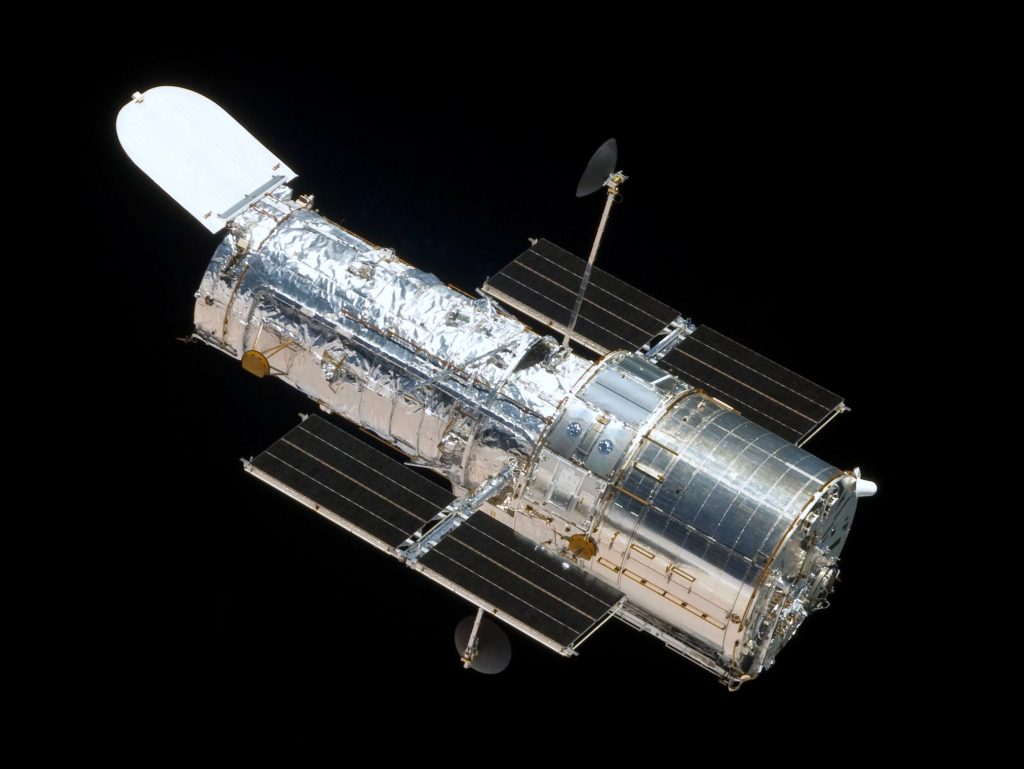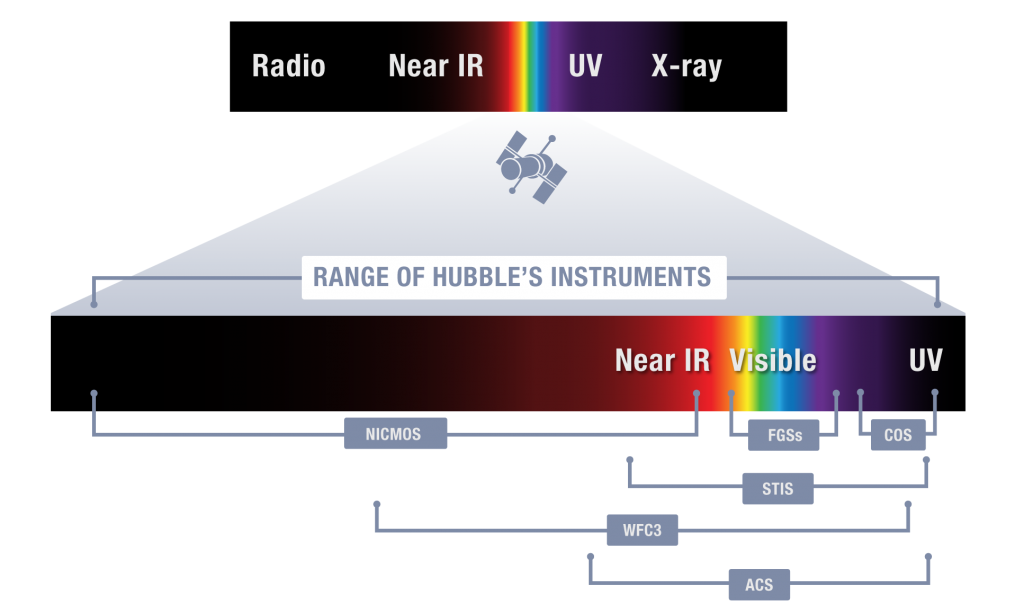The Hubble Space Telescope (HST) is a collaboration between ESA and NASA. It was the first astronomical observatory to be placed into orbit around Earth with the ability to record images in wavelengths of light spanning from ultraviolet to near-infrared. Launched on April 24 1990, aboard the space shuttle Discovery, Hubble is currently located about 340 miles (547 km) above Earth’s surface. In many ways Hubble has revolutionised modern astronomy, by not only being an efficient tool for making new discoveries, but also by driving astronomical research in general.

Credits: NASA
Reference:
Hubble’s primary mirror at 94.5 inches (2.4 m) in diameter collects an immense amount of light. Hubble can detect objects that are 10 billion times fainter than the unaided eye can see. The space telescope can distinguish astronomical objects with an angular diameter of a mere 0.05 arcsecond — the equivalent to discerning the width of a dime from a distance of 86 miles (138 km). High resolution enables Hubble to locate such objects as dust disks around stars or the glowing nuclei of extremely distant galaxies.
Hubble was designed to hold six science instruments:
- Wide Field Camera 3 (WFC3) expanded Hubble’s reach by giving the telescope greater access to ultraviolet, visible and infrared wavelengths of light;
- Cosmic Origins Spectrograph (COS) breaks ultraviolet radiation into components that can be studied in detail.;
- Advanced Camera for Surveys (ACS) conducts visible-light imaging surveys of the universe images of deep space;
- Space Telescope Imaging Spectrograph (STIS) combines a camera with a spectrograph
- The Near Infrared Camera and Multi-Object Spectrometer (NICMOS) is sensitive to infrared light

Credits: NASA